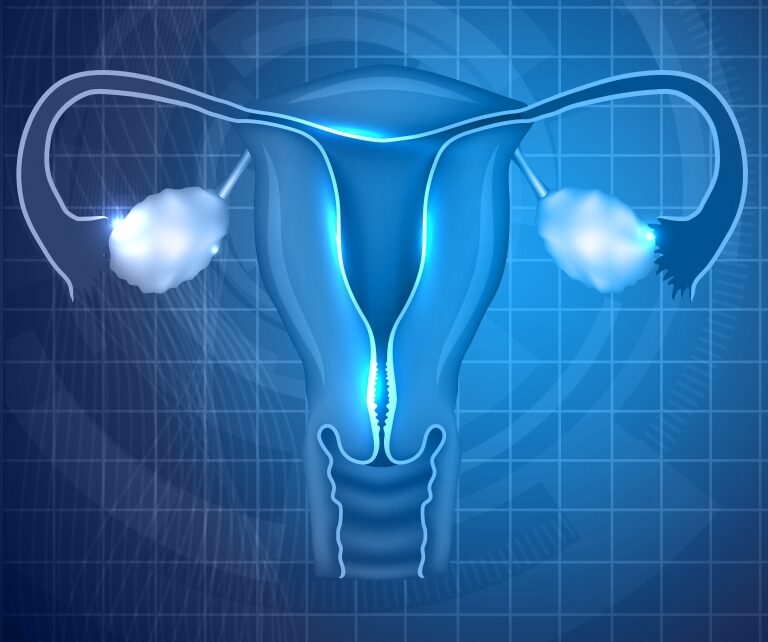
What is a hydrosalpinx and how will it affect my fertility?
The tubes connecting the ovaries and the uterus are known as the Fallopian tubes (or uterine tubes). These structures play an essential role in natural reproduction and are responsible for receiving the egg each month and, furthermore, it is here that the union between egg and sperm takes place (fertilisation). They also enable the resulting embryo to be transported to the uterus which is where pregnancy will take place.
A hydrosalpinx is the result of an obstruction at the far ends of the Fallopian tubes which leads to the area becoming filled with liquid. This can lead to the Fallopian tubes becoming very swollen and distended, resulting in a ‘sausage-like’ appearance. In many cases, the obstruction and the liquid that has accumulated impair correct functioning of the Fallopian tube: semen does not travel up, the egg is not received by the tube and fertilisation does not take place, making achieving a natural pregnancy complicated (particularly so if both Fallopian tubes are affected). Alternatively, a hydrosalpinx can lead to pregnancy occurring within the tubes themselves (ectopic pregnancy).
Índice
- 1 Why does the Fallopian tube become obstructed?
- 2 What are the symptoms of a hydrosalpinx?
- 3 How is a hydrosalpinx diagnosed?
- 4 How can I avoid getting a hydrosalpinx?
- 5 If I have got a hydrosalpinx, will I be able to get pregnant?
- 6 What if I am not trying to get pregnant but I do have a hyrosalpinx. What should I do?
Why does the Fallopian tube become obstructed?
The obstruction usually occurs as a result of a (previous) infection in the Fallopian tubes, often as a result of sexual transmission (for example, due to chlamydia or gonorrhoea). It is important to point out, however, that not all pelvic infections lead to a hydrosalpinx. Less frequently, a hydrosalpinx can occur following surgery (particularly in the case of surgery on the Fallopian tubes) due to serious cases of adhesions in the pelvis or because of endometriosis.
What are the symptoms of a hydrosalpinx?
In most cases, none. Sometimes, the patient may suffer from pain in the lower part of the abdomen (this may be occasional or persistent) and which can increase during periods and is often the cause of a permanent vaginal discharge. In some cases, an ectopic pregnancy can be the first sign of an abnormality in the Fallopian tubes and when the hydrosalpinx leads to serious damage or total obstruction of the tubes, the reason for seeking medical advice will be infertility.
How is a hydrosalpinx diagnosed?
are three means of determining if the Fallopian tubes are obstructed and these tests are often complementary:
- A hysterosalpingography (HSG). Refer to our webpage for further, detailed information on this test.
- The liquid in the Fallopian tubes can usually be seen with an ultrasound scan and it generally also tells us how severe the hydrosalpinx is.
- A laparoscopy is a type of surgical procedure which facilitates evaluation of the Follopian tubes and it can be determined if they remain open by means of a coloured liquid which is injected through the uterus and observed to see if it travels right through to the ends.
How can I avoid getting a hydrosalpinx?
Given that a hydrosalpinx is generally the after-effect of an infection in the Fallopian tubes, a lifestyle which reduces the risk of sexually transmitted diseases and early intervention using antibiotics in cases of pelvic infection, are advisable.
If I have got a hydrosalpinx, will I be able to get pregnant?
If the Fallopian tubes are totally obstructed, fertilisation is impossible and it will not be possible to get pregnant naturally. In such cases, the most successful type of treatment for getting pregnant is in-vitro fertilisation (IVF) since fertilisation, in this case, is done in the laboratory and the embryos are later positioned directly in the uterus. The Fallopian tubes are not involved in the process. Removal or obstruction of the hydrosalpinx is generally recommended prior to beginning IVF because it is associated with a reduction in the possibilities of getting pregnant with this treatment, particularly if the hydrosalpinx affects both tubes.
What if I am not trying to get pregnant but I do have a hyrosalpinx. What should I do?
In patients who do not wish to get pregnant but who do have symptoms such as severe pain caused by a hydrosalpinx and which is not manageable with pain killers, the option of surgery in order to remove the affected Fallopian tube should be contemplated (salpingectomy).
MORE RELATED INFORMATION
- The significance of sexually transmitted diseases (STDs) in fertility
- Blocked fallopian tube. The involvement of “tubal factor” in fertility
- Hysterosalpingographies versus sonohysterographies
Dr Juan Carlos Castillo, gynaecologist at Instituto Bernabeu.
